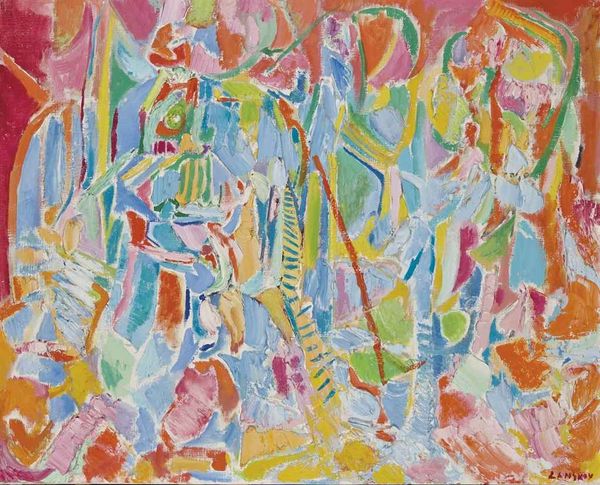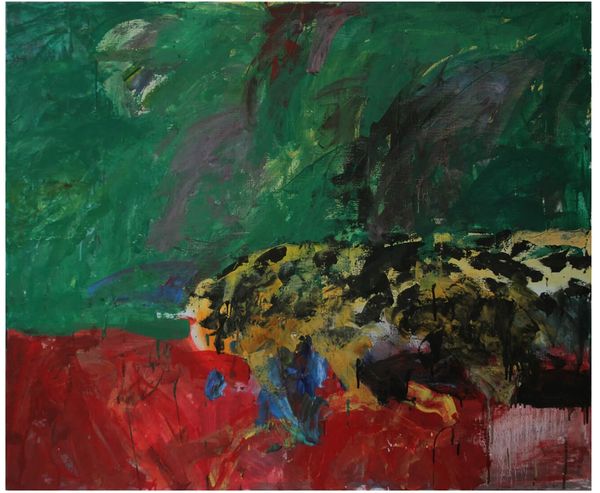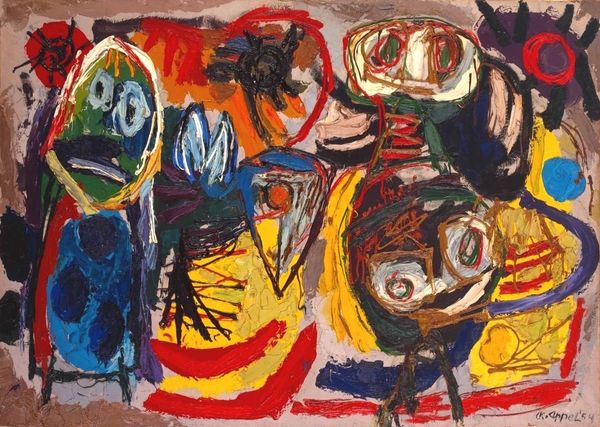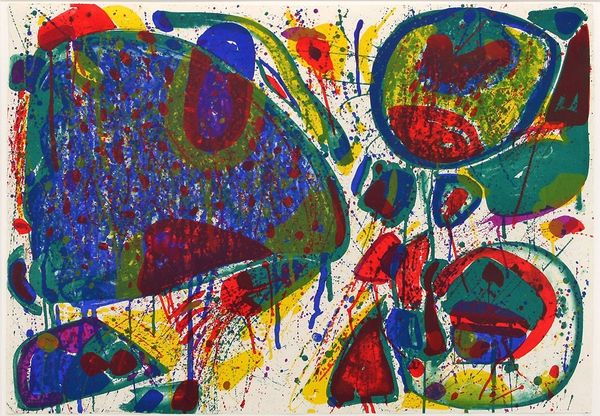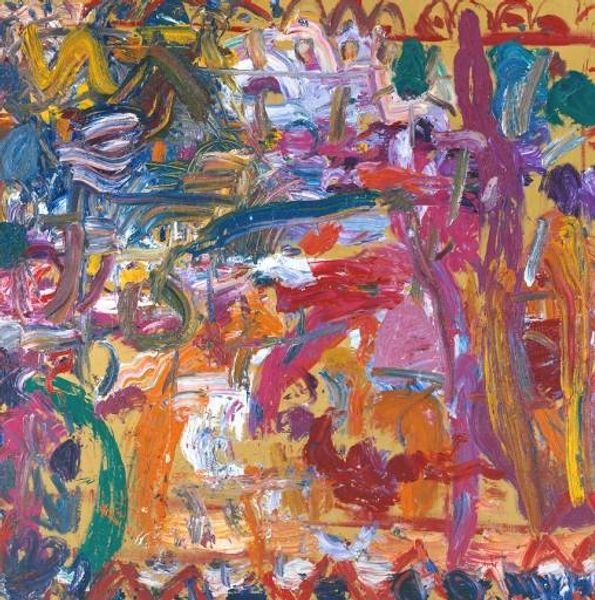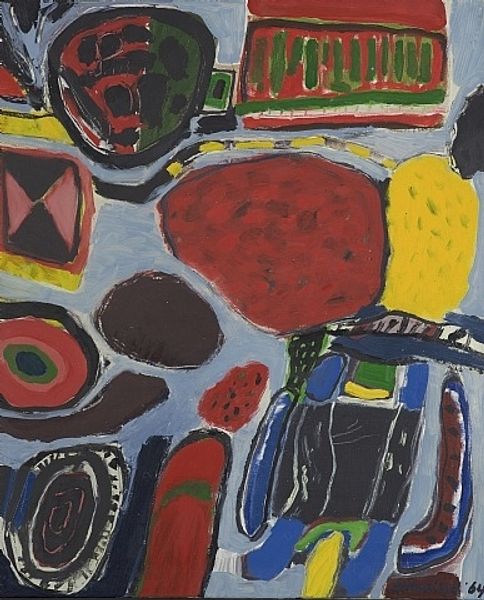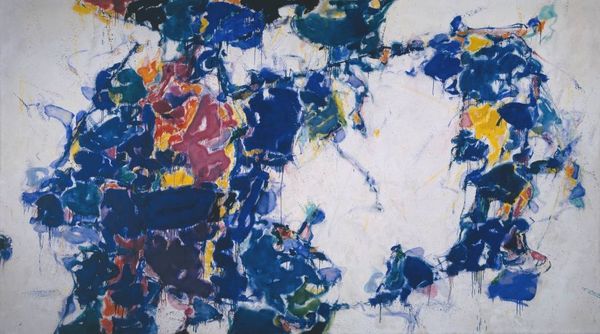
Copyright: Georg Baselitz,Fair Use
Georg Baselitz created Folkdance Melancholia using oil paint, rendering a scene of figures in a state of apparent sorrow. Painted in Germany, the cultural context of this work is key. As with many of Baselitz's paintings, this one reflects on the weight of German history, and the difficulty of representing the nation's culture after the Second World War. The term "folkdance" evokes the traditional customs of a people, while "melancholia" suggests sadness and regret. Baselitz seems to ask if it is possible to celebrate German culture without ignoring the shadows of the past. The checkered pattern at the bottom could be a stage or a table, suggesting social gatherings and communal life. Historians of art will often consult archives, letters, and critical writings to understand the meanings that an artist invests in their work. They explore how artists like Baselitz engage with the politics of imagery. After all, art isn't just about aesthetics. It reflects the world it inhabits.
Comments
No comments
Be the first to comment and join the conversation on the ultimate creative platform.






